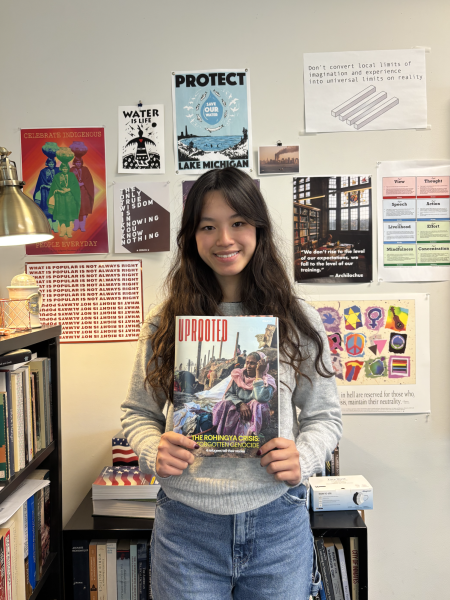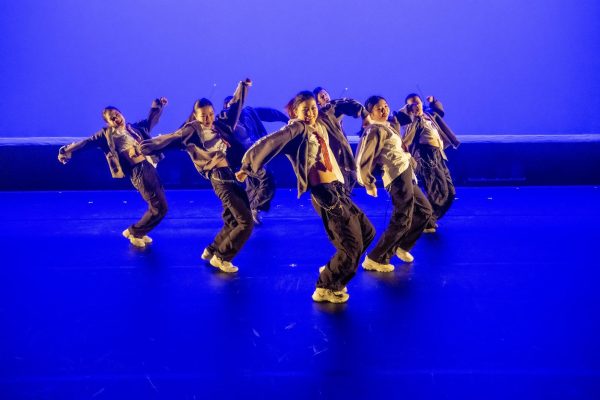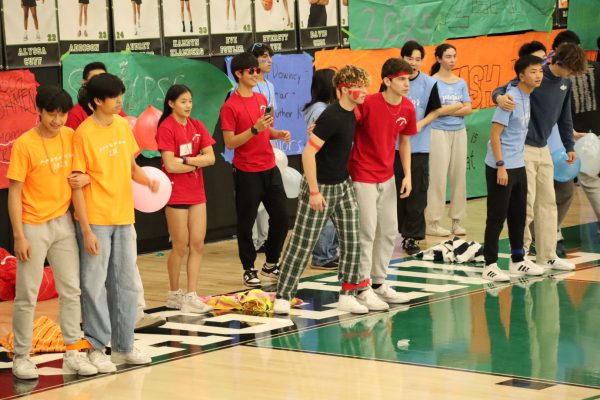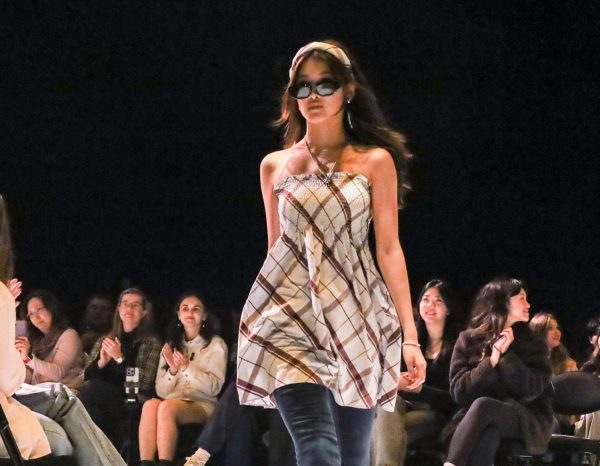Two Views of the Wonder-ful Years
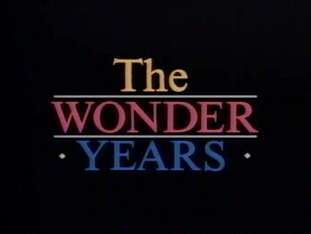
These two critical reviews, with decidedly different approaches to the 1988 pilot screening for their group of writers of T.V.’s “The Wonder Years” were written for the OCJEA Critical Review competition by two Sage Hill School student journalists, Julia Dupuis (first place) and Claire Dwyer (third place) on Feb. 28.
Comedy or Misogyny by Julia Dupuis
The show begins with an easy transition; a slow pan around the neighborhood, laughing children playing in the street, and touching moments of family camaraderie. The Wonder Years, aired Jan. 31, 1988, starts 12-year-old Kevin, a stereotypical young boy living in a white suburban neighborhood. He must overcome the daily struggle of junior high as well as the many changes in his life during the rise to early adulthood.
With the appropriately cheesy music accompanied by colorful transitions, The Wonder Years appeals greatly to a younger audience. On the surface it appears to be a classic, family-based comedy show. It reflects a touching story, with an ordinary boy overcoming the trials of his teenage years while also coming to terms with the darker realization of ar and death of a young person close to him.
But this facade only servers to disguise the deeper, uglier undertones of misogyny and a false depiction of the male sex.
From the start, the audience’s view is shifted to a neighborhood street crowded with adolescent boys They tumble about on the asphalt, tossing around a football as bouncy music plays in the background. From the sidelines, a girl and a boy watch intently. The girl, Winnie, seems to have an instant connection with Kevin, doting on him from the sidelines as she watches him play football. The boy beside him is Kevin’s best friend Paul. Paul is displayed in a similar light as the girls, watching the boys roughhouse from the sidelines. At first glance, this appears to be revolutionary as males participating in activities normally regarded as feminine is not commonly seen in modern times, let alone in the 1980s. However as the show goes on, it is clear that Paul is meant to be the sidekick to Kevin’s antics. He is the stereotypical nerd, a loser, the bottom of the pack at school. From the unfashionable clothes he wears to the enormous spectacles that seem to be constantly sliding down his nose, Paul’s effeminate nature is seen as weakness.
The family dynamic reflects a similar sort of ideal. In the introduction, Kevin’s family is shown having meals together, laughing, talking, the two brothers playfully tussling on the street. The truth, however, is much less cheerful. As the family awaits the father’s return from work, Kevin’s mother warns them not to make him “crazy.” This already hints at a darker theme in the relationship between Kevin and his father. Before he even enters the room, the audience already perceives what kind of a person he might be. They paint a picture of him that may not be as appealing as the producers intended it. The father is seen as a ticking time bomb.
Even Kevin is wary, saying that he tried his best not to talk or even look at his own father before he had consumed alcohol to numb his anger. These are clear signs of an abusive dynamic between the husband and his family. They must walk on eggshells to avoid disrupting him. When the father sits down, he slams his fist down on the table making the boys jump. Then the camera pans out, the light fades and there is a pause for the audience to laugh. The show tries to play this off in a humorous light, seeing it almost as a normality to a family such as this.
Later, throughout this pilot episode, as Kevin gets into trouble at school, his father shows up to reprimand him. This was the most unsettling scene of all showing the father cracking his knuckles as he focuses his steely glare on Kevin. As he is escorted back home, KEvin reflects on how his father had never hit him before with “not yet” added as ominous foreshadowing for something that may be to come. The fact that his terror is meant to be seen a comedic is almost sickening as the show places an abusive domestic situation as a normality for a family in that time.
The skewed perception of men, as shown though the excused behavior of Kevin’s father, is only further through striking undertones of misogyny. In this time period, women were still battling the repressive ideals of sexism present in society. This is played off, again, as a complete normality to the story. Kevin and his friend Paul are shown flipping through the sister’s book. On the cover is a woman holding a sign that reads, “Women Unite.” In this turbulent time, it seems clear that the book represents an underrepresented concern: feminism. Rather than showing this as a positive, or at least clearly defining the serious social issues that lie behind it, the two boys are shown reading it only to look at the naked women with. This is, yet again, excused as humor. This not only belittles adolescent boys, displaying them as mindless slaves to their hormonal desires, but it also demeans the continuing fight for women’s rights that, particularly during the 80s, was critical for ensuring equality.
Furthermore, Kevin’s obsession is shown to not just be about something as detached as a picture in a book. The sexism imbedded in the patriarchal society around him also influences the way he interacts around girls at his school. As Winnie, his childhood friend, approaches the bus stop, he describes her as a “. . .helpless waif in fishnet tights and go-go-boots.” He has known this girl for a long time and yet he doesn’t identify her by her personality or intelligence or positive traits. Instead he immediately centers on her appearance, what she’s wearing, even going so far as to call her a “helpless wait.”
This clearly shows how he sees the girls around him as weak or defenseless rather than as human beings just like him. His false perception continues to other women in his life including his mother. At the funeral of someone close to them, the family sits in silent grief, each coping with the turbulent event in their own way. Kevin describes his mother as having dealt with her mourning with “cold ham and jello” just like “women all over America.” This only serves to further the idea that women are meant to serve a traditional, domestic role in the household and even that they enjoy this position of subservience to the point at which they use it as a coping method for their pain.
While not only damaging to the perceived image of women and presenting them in a lesser light to the young, impressionable audiences, this overall theme of misogyny has devastating effects on the perception of men as well. Shown through Kevin’s behavior, as well as the behavior of his friends, his entire life seems to revolve around the idea of sex. In a conversation with his brother, Kevin learns about the idea of “second base” with a woman. He claims that this “changed the way we look at women.” Kevin is cultured and manipulated into seeing the women around him as objects for the sole purpose of male sexual pleasure. Being friends with Winnie isn’t enough to make him see her as a person, as the overwhelming presence of objectifications bleeds into his interactions with her. At her Winnie’s brother’s funeral, all Kevin can think about is that he wants to “grab her, take her in my arms, feel her 72-pound body next to mine.” This not only shows an immense lack of sensitivity on his part, but also is a violation of her personal identify. She has not given him an consent to touch her at all and yet he imagines what it would be like just to “grab” her. although he ends up fighting down the urge, resolving to give her more time, the fact that Kevin’s only thought at this time in Winnie’s life is to violate her personal space and disregard her permission depicts men in a negative, almost animalistic light. The implication is that they have little to no control over their own impulses. All Kevin desires is Winnie and he spares little thought to her feelings.
While seen as a classic, comedic show centered on family dynamics, with blaring music and a grainy, colorful background, the hopeful theme only demeans the serious issue that lie behind it. The light-hearted humor coupled with the sentimental moments make the show “The Wonder Years” appeal to a younger audience, ultimately giving them a skewed perception of what a normal family dynamic is, advocating abusive behaviour and the objectification of women.
Something Beautiful from the Past by Claire Dwyer
With the classic music of the late 60s blaring casually in the background and the grainy family videos introducing each character, “The Wonder Years,” a sitcom aired in the late 80s, suggested nothing but middle of the road humor, average writing and a bland storyline. Little does the view know, but “The Wonder Years” provides some of the most brilliant humor and well-written characters that a sitcom can have who virtually negate the disconnect which comes from the outdated storyline and quality of the images, and the vanilla, glossy, happy quality which is indicative of an 80’s sitcom.
“The Wonder Years” takes place in 1968, 20 years in the past where the main character Kevin (Fred Savage) is 12 years old and starting seventh grade in the fall, his first year of junior high. His sage, adult voice (Daniel Stern) looks back on that special, innocent time of his life as a sort of “wonder years” period where kids could still walk out after dark without fear of “ending up on the back of a milk carton.” Writers and creators Carol Black and Neal Marlens created a “blast from the past” sitcom, written from a perspective that we in the 21st century also view as the past.
Despite the fact that the series is doubly ensconced in history and not at all in tune with current events, the characters are so well developed, with human qualities and idiosyncrasies that complement their classic molds, the story remains timeless. How could anyone forget that fear they felt in junior high trying to find the place to sit at lunch or the cool friends to hang out with?
The series opens in the pilot episode with images of the 60s such as Neil Armstrong on the moon. The movie was accompanied by music we in the 21st century are still very familiar with such as Buffalo Springfield’s “Stop Hey What’s That Sound,” which becomes the unseemly backdrop to a military funeral of the cool 19-year-old teenager who lives on Kevin’s block, the depressing consequence of an unwanted war and an innocent decade. Kevin’s junior high school is aptly renamed John F. Kennedy Jr. High as he says, “practically all schools were being renamed at the time.” The director, Steve Miner, does a brilliant job of recreating the feel that we are still in the 60s by bombarding us with the popular culture of the time and reminding us of the era’s current events. One can almost see all the baby boomers in the audience, nodding quiet approval. This was their decade.
The series almost never misses a beat with humor that is right on the mark and timed perfectly. When Kevin and his nerdy, allergy-ridden best friend go to gym class in the pilot episode and, as part of sex education ask the gym teacher to draw the rest of the woman’s body around her uterus and reproductive system, the teacher draws a big square around the uterus. His adult voice expresses his dismay at the state of sex education and public school teachers. Kevin similarly gets in trouble for bringing an apple out of the school cafeteria and when he is questioned by the school disciplinarian he throws the apple back into the cafeteria. When he is later questioned by his picture perfect suburban mother, his father and the principal in the principal’s office, what is easily the show’s most hilarious moment occurs. We hear Stern’s voice dictating Kevin’s thoughts as he innocently wonders why the principal “has a brain the size of a peanut?”
The humor within the show is so hilarious because the cookie cutter characters from the cookie cutter suburbs remind us of ourselves, our own childhoods, our own first loves. We laugh and cry with them because they are so fiercely relatable despite the fact that by modern standards the classic gender roles and all-white, middle class suburban family is no longer indicative of the average American family or the average American dream. The gym teacher with “an inferiority complex. The little middle school boy who does not know what a jock strap is. They are all parts of the story of our country and that is the story that “The Wonder Years” is so incredibly successful in telling.
Another subtle detail in the beginning of the pilot episode is when Kevin’s mother (Alley Mills) attempts to restrain the temper of Kevin’s father (Dan Lauria) and prevent him from distress and getting angry with the family. This detail can at first be perceived as just the classic American housewife trying to make her husband comfortable after work, but also as the quiet strength of Kevins mom, Mrs. Arnold, in keeping her family safe. It can be interpreted as a sort of bittersweet comment on the state of the American family and gender relations and gives the show the slightly modern twinge that reminds us it was written about the late 60s during the late 80s.
The most touching and perhaps most immortalized moment of the series and both episodes was when Kevin and his “girlfriend” Winnie/Gwendolyn (Danica Mackellar) meet in the forest shortly after they find out that Brian Cooper, Winnie’s brother, has just been killed in the war. Kevin drapes his jacket over her shivering shoulders and they kiss. Later on, in the second episode, “Swingers,” the two meet in the park and decide to swing instead of making out, resolving to “remain kids for just a little longer.”
With this moment, our hearts ache for the young innocent love the two share and the pure kindness and respect that can only come from the happiness of childhood.
The show is successful in getting the viewers to ardently yearn for their own pasts and thus fall in love with a sort of recreated version of it with which they can identify on screen. Brilliant, funny, heartbreaking and entertaining, “The Wonder Years” definitely deserves its spot in the history of classically good sitcoms.



